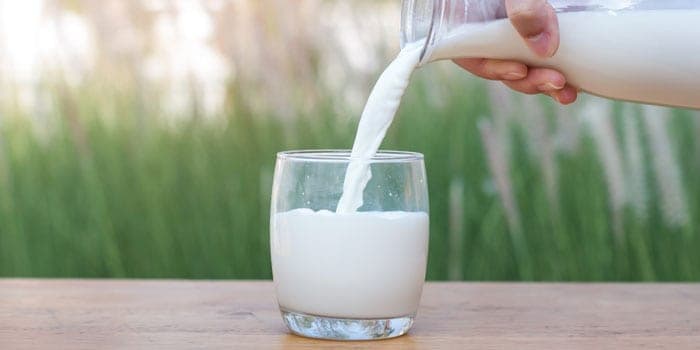
How COVID-19 Could Benefit the Dairy Industry
Covid-19 could benefit the dairy industry as consumers could shift from meat-based to dairy-based protein. The Government may consider reducing GST on ghee and milk fat from 12% to 5%.
When the entire nation continues to be under lockdown due to the Covid-19 pandemic, our dairy industry has proved to be more resilient than many other sectors in terms of the extent of supply chain disruptions. Millions of our animal-owning households, the majority being smallholders, particularly those connected to producer-centric institutions continued to milk their cows and buffaloes, and sell the surplus to the village milk collection centres. Milk was then pooled, cooled, and transported to processing centres where it was pasteurised, packaged and dispatched to thousands of marketing outlets, finally finding its way to millions of homes.
Of course, during the initial phases of the lockdown restrictions, both milk procurement and sales of milk were impacted in several parts of the country due to supply chain disruptions. Information collected by National Dairy Development Board (NDDB) from the dairy cooperatives (see graphic) shows a decline in daily liquid milk sales by dairy cooperatives by about 15% in the Covid-19 lockdown period between March 1-15 and April 8-14, and a drop in the proportion of sales to procurement by about 8.8% during the same period. The liquid milk sales are showing signs of steady recovery, thanks to the policy and proactive support of central and state governments, and the measures taken by producer-centric organisations to address supply chain challenges.

Disruption seems to have impacted the unorganised private players significantly as they have a higher share of products in their sales portfolio compared to the dairy cooperatives. It was, therefore, quite logical that the areas/milksheds where private players had a stronger presence, milk got diverted to the dairy cooperatives as a result of which, producer price also got subdued due to the imbalance between demand and supply. As news started trickling about supply chain disruptions, governments, both central, and some states, swung into action to ameliorate the situation. These interventions included making available low-cost working capital to producer-owned institutions to convert milk into skimmed milk powder (SMP) and milk fat, direct procurement of surplus milk for conversion and direct distribution to needy people.
To enhance the marketing of milk and milk products, many dairy organisations, initiated home delivery of milk and milk products through mobile carts, vans, e-commerce, etc. All these measures helped stabilise milk sales, opening up opportunities to use e-commerce. Many smart and progressive dairy farmers converted their surplus milk into khoa, paneer, ghee, etc, and sold it to the neighborhood markets through informal channels. All these measures helped sustain dairy industry. Covid-19 pandemic has thrown up the real possibility for our dairy industry to benefit as large sections of consumers may shift from meat-based to dairy-based protein. Covid-19 has made people more aware of the need to adopt a healthy diet.
In contrast to sectors like construction, manufacturing, hotel, travel & tourism, etc, which were severely hit by the lockdown restrictions, dairy industry seems to have done remarkably well. Globally, Covid-19 impact has pushed many large commercial dairy farms even in the most dairy developed nations to the brink of closure, prompting governments to announce bailouts. Recently, Trump administration announced a bailout package of $15.5 billion for the US dairy industry. The US is contemplating to purchase milk, convert it into commodities which could be used as international humanitarian aid.
In the present context, it makes smart business sense for our dairy industry to increase milk procurement for making SMP to meet the growing demand for milk and milk products. Milk procurement, during Covid-19 lockdown, despite market shocks indicates that dairies have started building up commodity stocks to meet lean season requirements. The stock of SMP as on April 1 was higher by about 25,000 MT as compared to March 1, and the estimated daily average SMP production has increased from 790 MT during March 1-15 to more than 1,000 MT during April 8-14.
India may consider reducing GST on ghee and milk fat, from 12% to 5% to bring it at par with the GST rate for SMP. This has been a long-standing demand of the dairy industry and will ultimately benefit milk producers, increase rural incomes, spur demand and hasten economic recovery. During these difficult times of the dairy farmers, our cows and buffaloes must be taken care of, as any compromise on their feeding and health care would impact reproductive efficiency and productivity. Both governments and dairy cooperatives should provide these inputs and services to the farmers on subsidised rates or deferred payments basis. The country cannot afford to go through another phase of supply disruption resulting in pressures on availability and prices of milk.
Covid-19 crisis has witnessed reverse migration of labour force from urban to rural areas leading to social disruptions. On the positive side, we can look at this as an opportunity; these workers can be encouraged and incentivised to join their family agriculture/dairy farms.
The author is Chairman (Dilip Rath) National Dairy Development Board (NDDB), Anand (Views are personal).
